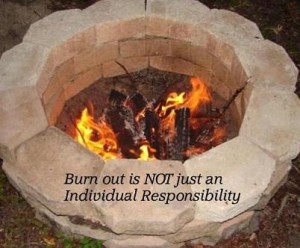I do stress reduction seminars for different companies, but a recent article in the NY times stopped me in my tracks because it confirmed I needed to keep up the drum beat of telling organizations that they also have to address what is causing the stress and ultimately burn out. The current podcast episode looks at a disturbing trend and what can be done to stop it.
Generally Stress and burn out are seen as personal with organizations an innocent bystander in the drama. The article brought all this up because it focused on the rising trend of using ADHD medication to keep working even when the body had given signals that it had reached its limit. Stimulants like Adderall, Vyvanse and Concerta are rapidly becoming a means to improve work performance even if you don’t have attention deficit disorder. One woman in the article, used an iPhone sleep tracker that registered only 3 ½ hours of sleep over a nine month period. And energy drinks are just as bad as one client told me he used them to keep up with the increased work demands brought on by downsizing. He only stopped when he developed a three day nose bleed that his doctor told him was a good thing because it probably prevented his having a stroke. No amount of walking around the block can fix this.
The instances I described are extreme but illustrate that burn out is becoming an everyday occurrence as fearful workers attempt to keep working. The occasional all nighter is a doable must in a number of situations. Where people run into problems is when the all nighters go on for days, months, and sometimes years. Burn out is the eventual result.
Burn out is not a victimless crime when it comes to the bottom line, because generally it is the most creative and dedicated people in the organization who fall victim to it. When you consider the costs associated with health claims or worse the person leaving the organization because they are emotionally and mentally exhausted, there is a price to be paid by the company in actual dollars and the lose of this person’s input as well as institutional memory.
Businesses fail to realize they often emphasis quality of work while actively working to undermine the quality of work. By doing this they too have to shoulder some responsibility for understanding not only what burnout is and attempting to “fix” the worker, but also how work is structured to cause it. Christina Maslach’s ground breaking book “The Truth About Burnout: How organizations cause personal stress and what to do about it” establishes that there are themes that tend to create burnout. The book used clinical research to support the benefits for business of giving people manageable workloads, a sense of meaning by allowing input (quality circles comes to mind), pay that is not excesses but adequate for output, a sense of fairness, encouraging team work, and finally hiring people who are a good values fit. What is amazing is that the book was written in 1997 and yet little seems to have changed. In fact, the biggest change has been a shift to pharmaceuticals to keep the oar pullers moving the ship.
Post an article anywhere about toxic work environments and watch the comment section fill up. True, people have to assume responsibility for maintaining their attitude and health but businesses too have to ask themselves why is turnover high; or why did one of their most productive employees suddenly throw in the towel and jump ship? Could it be that the company’s understanding of human behavior has been misinterpreted as “people problems” without a focus on changing some of the situations that cause them?
For years business has known some of the things they needed to do to prevent burnout and simply given lip service to them in the name of ever increasing productivity. As the economy gradually improves they might be surprised to find all that remains is scorched earth and workers running for the door with only zombies remaining.
If you like the show, be sure to subscribe on iTunes and Stitcher. If you really like it, be sure to write a review. It helps the show.


